Nonfarm Payroll data was released Friday morning and the headline number was better than expected. As a result, U.S. stock markets were up at or near 1% on the day, closing in once again on all-time highs.
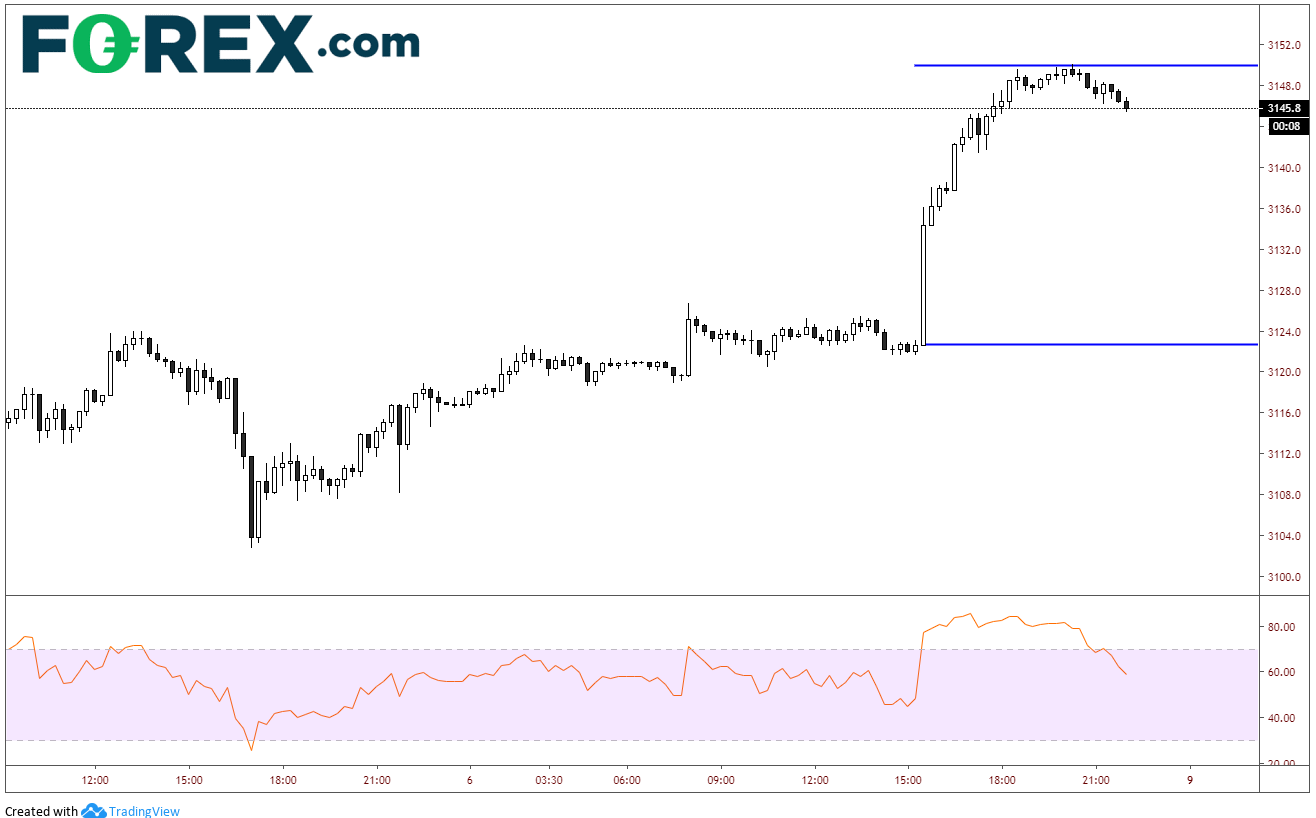
As one would expect, with a strong move higher in stocks, USD/JPY would follow. But take a look at the price action in USD/JPY since the initial move after the NFP data was released:
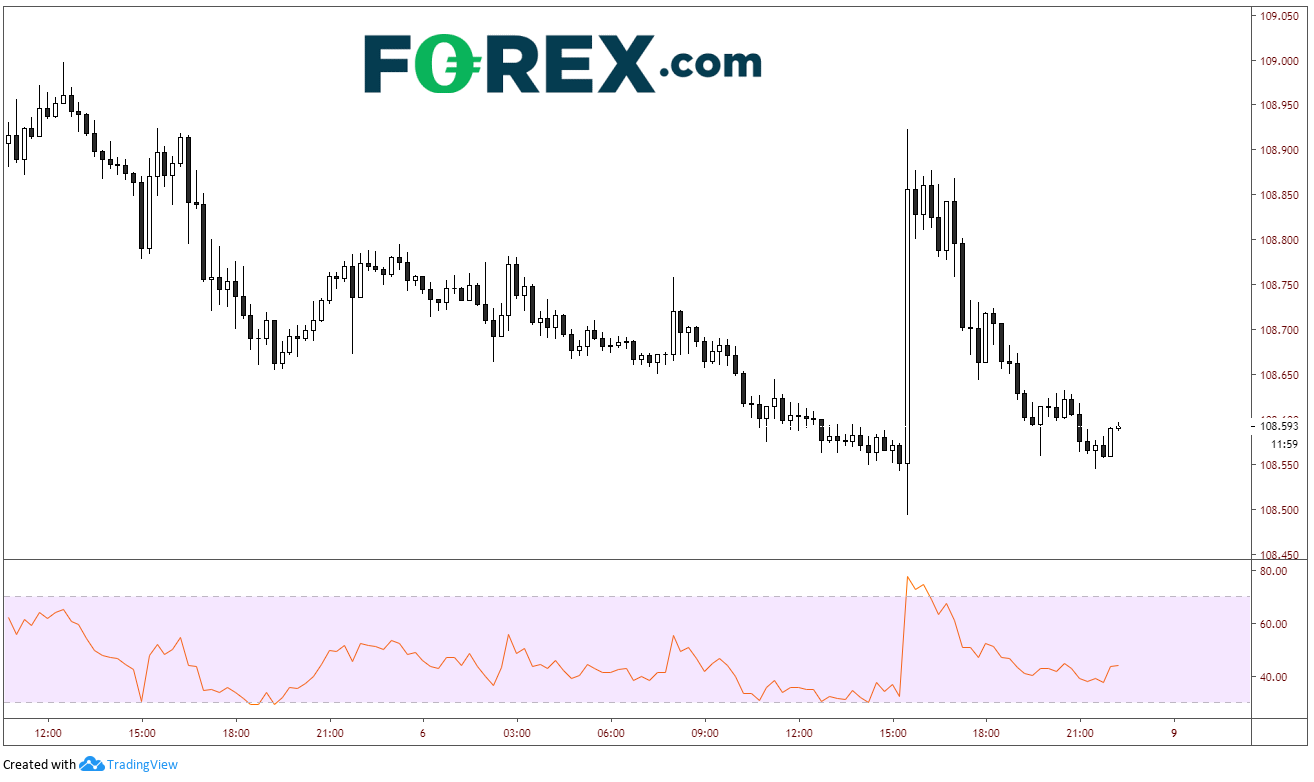
USD/JPY was actually down slightly on the day! On a daily timeframe, the pair couldn’t close about the 109.50 level, and therefore failed to break above the neckline of the inverted head and shoulders pattern. In addition, that level represented the 61.8% Fibonacci retracement level from the highs of April 24th to the lows on August 26th. Also, a rising wedge was formed, and price broke lower out of the wedge. (The target for a break from a rising wedge is 100% of the wedge, which would be near the 104.50 level.) USD/JPY closed back below 109.00 on Monday, and then below the 200 Day moving average on Tuesday. The pair hasn’t been able to close above it since Friday of last week.
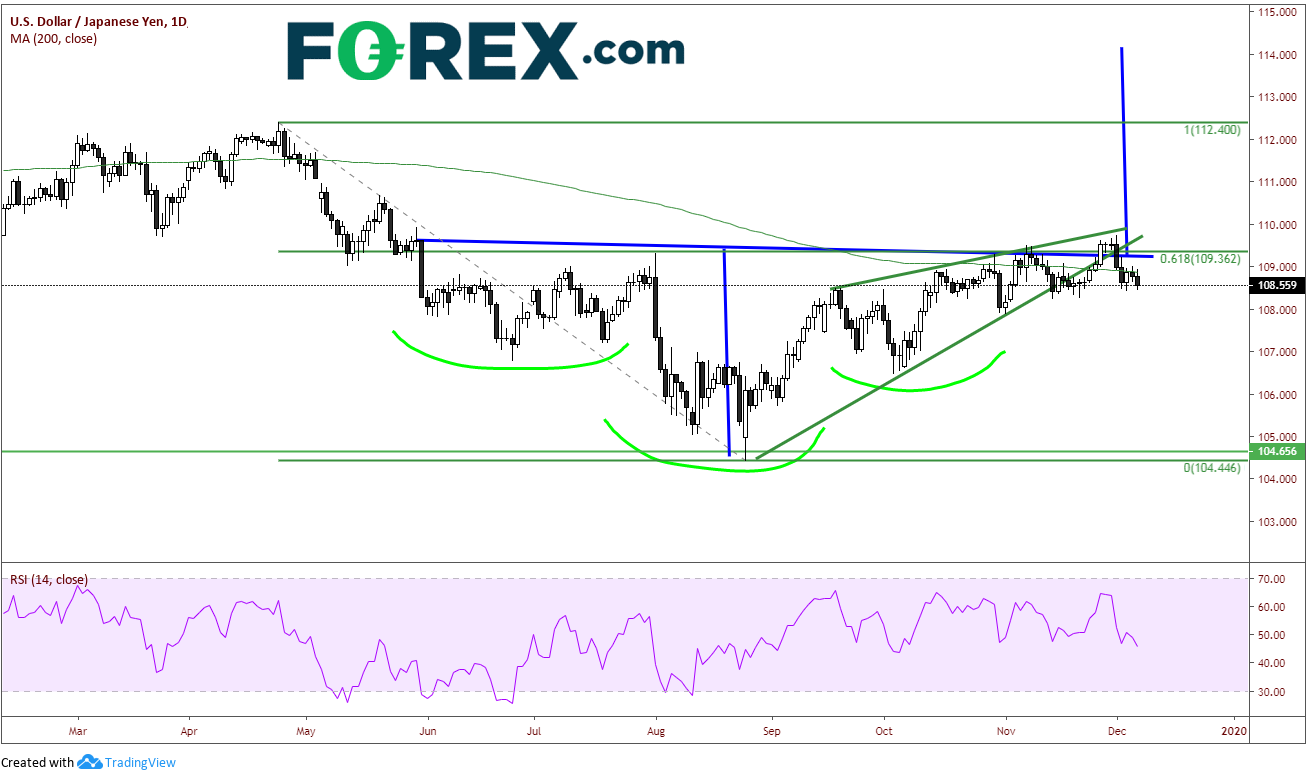
Traditionally, stocks and USD/JPY move together. However, take a look at how the 2 assets have diverged over the last two days.
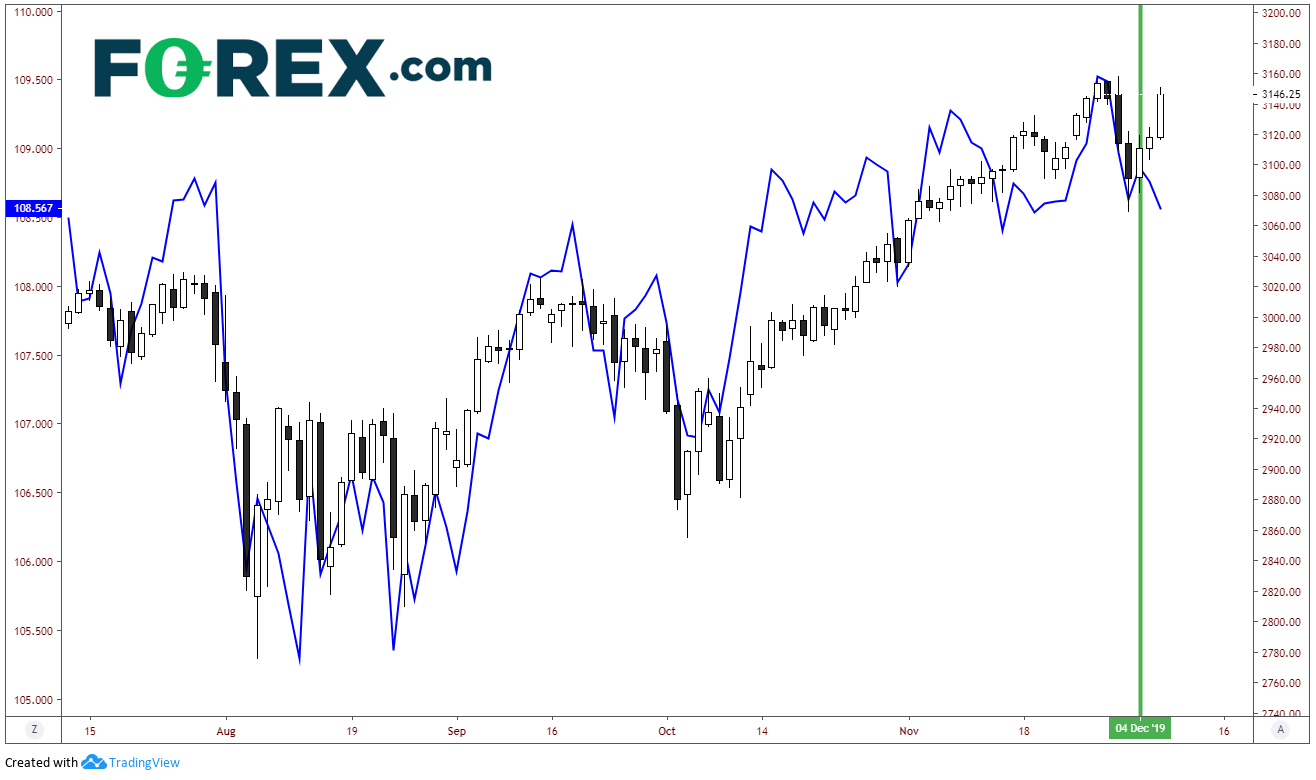
First support now comes in at Wednesday’s lows and the 38.2% Fibonacci retracement level from the lows on October 3rd to the highs on December 2nd near 108.40/50. Below there is horizonal support near 108.25. But the ultimate support doesn’t come across until 104.50, which is the low from August 23rd, however there are various horizontal support levels all the way down to that level.
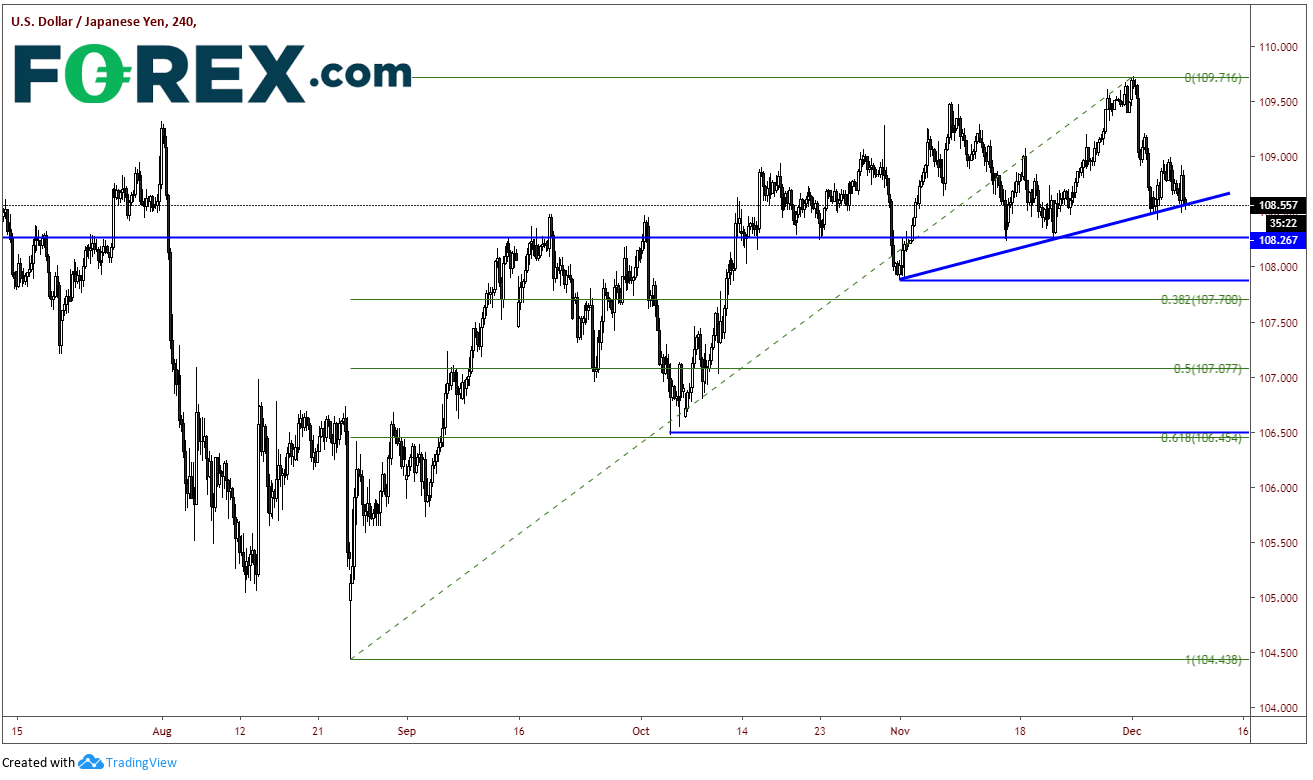
That leads us to beg the question….What happens to USD/JPY if stocks begin to sell off next week? More specifically, what happens to USD/JPY (and other JPY pairs) if there is a hawkish statement from the FOMC on Wednesday? Or what happens to the pair if Boris Johnson loses the election on Thursday? Or what happens if a U.S.-China trade deal is off the table? The risk is that stocks will move lower. And if that is the case, USD/JPY may be ready for a move even lower with them.
